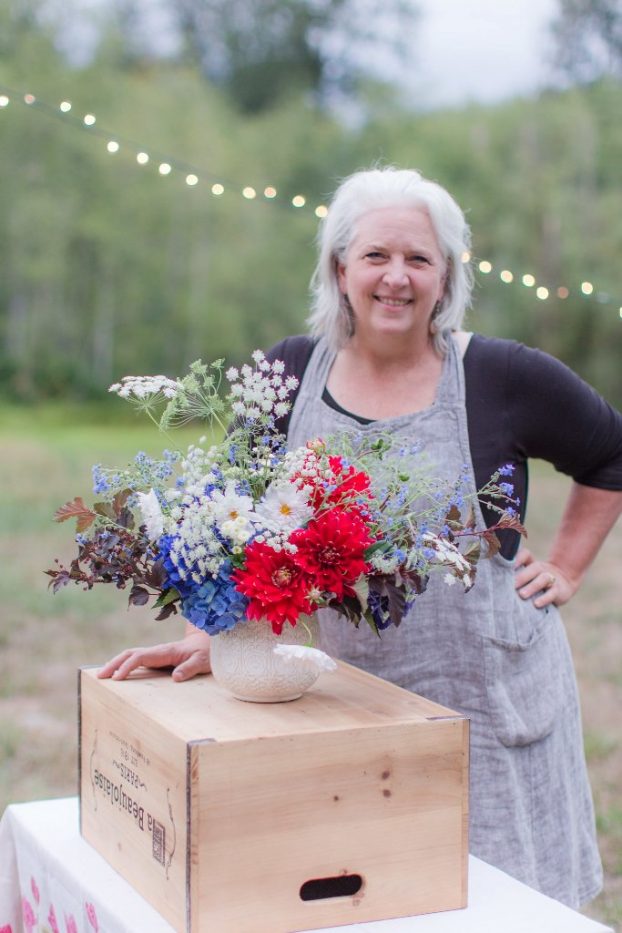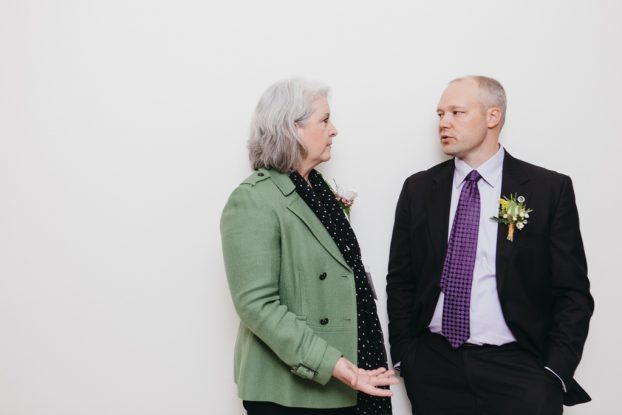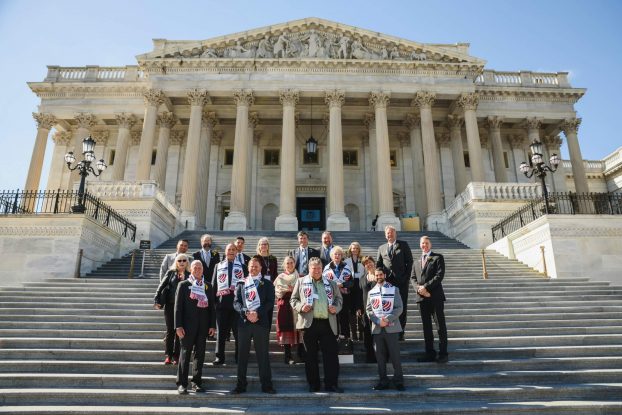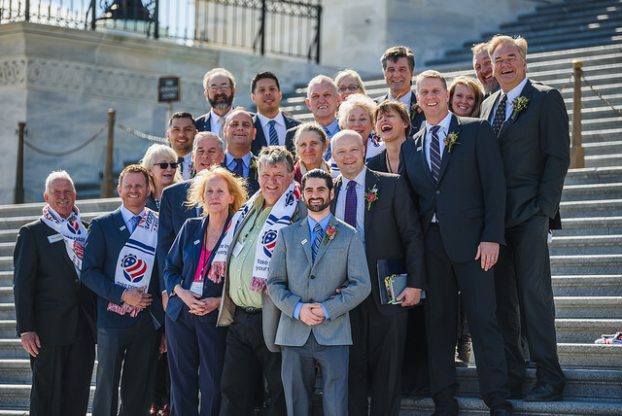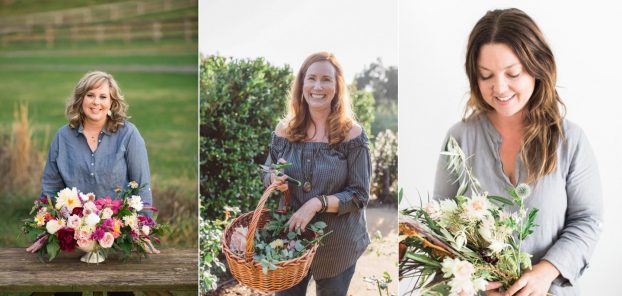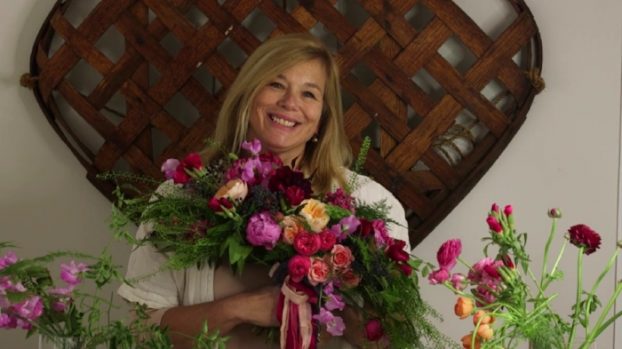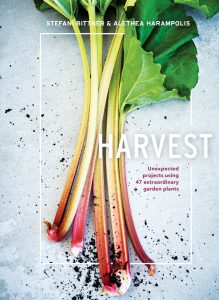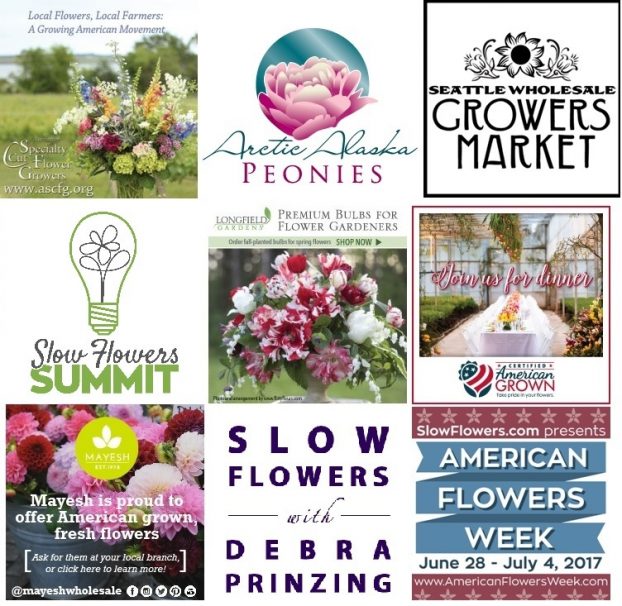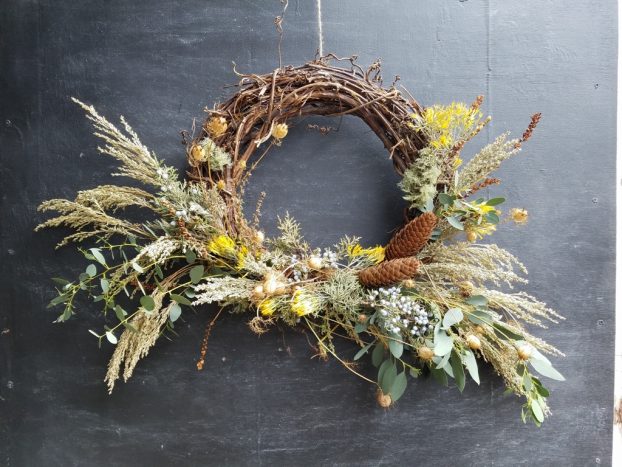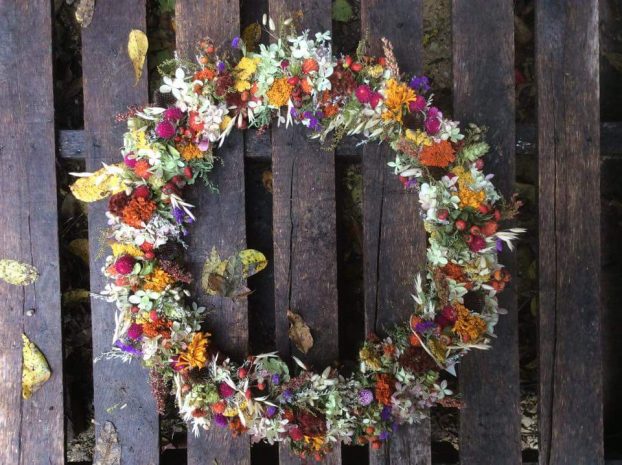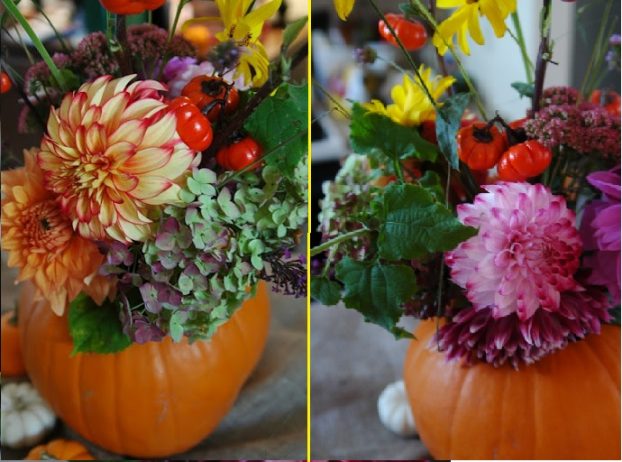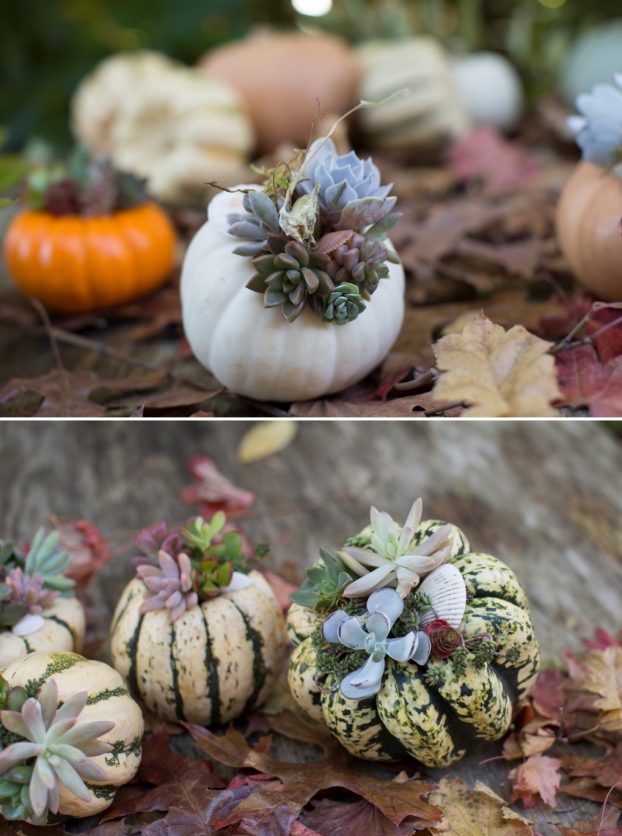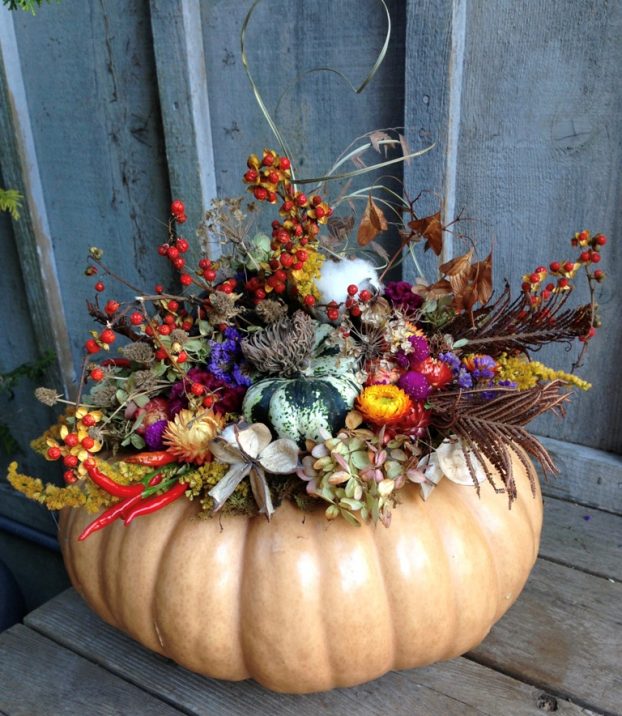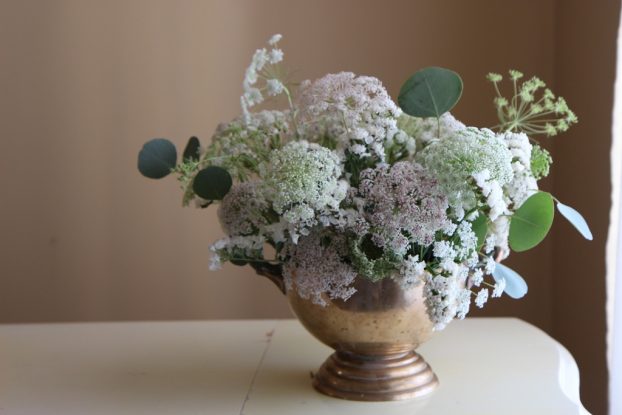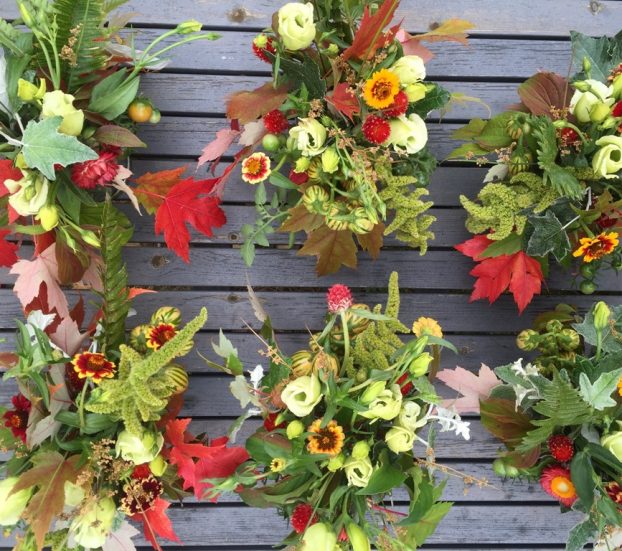Podcast: Play in new window | Download
Subscribe: Apple Podcasts | Podcast Index | RSS | More
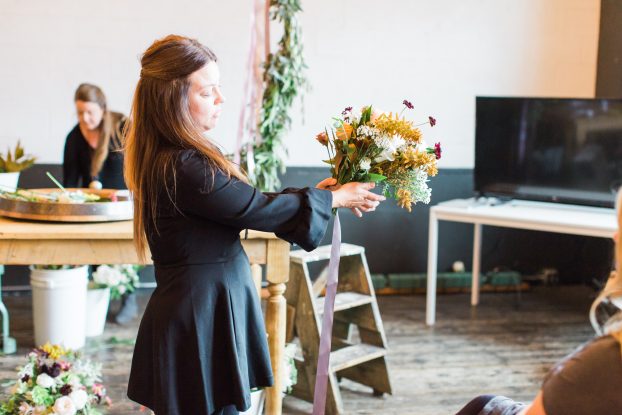
Christy Hulsey, Mayesh Wholesale’s 2017 Design Star, taught recently in Portland (c) Nicole Clarey Photography
Last month I traveled to Portland for a wonderful day hosted by Mayesh Wholesale, one of a series of design workshops featuring their 2017 Design Star, Christy Hulsey.
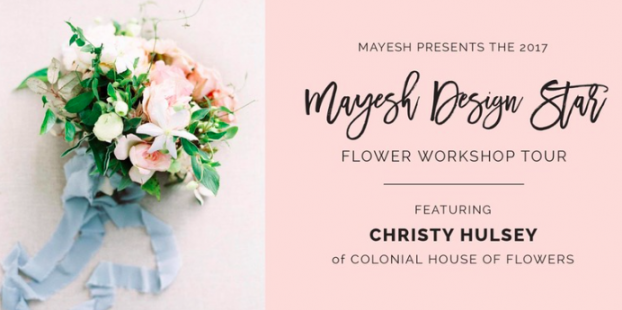 Christy is the owner and creative director of Colonial House of Flowers in Statesboro, Georgia, outside Savannah, and she was selected by Mayesh to be this year’s design muse. In the past, as I understand it, the creative inspiration and instruction of each year’s Mayesh Design Star program has mostly been video-based. This year was incredibly ambitious, with Christy signing on for a coast-to-coast tour of workshops and events.
Christy is the owner and creative director of Colonial House of Flowers in Statesboro, Georgia, outside Savannah, and she was selected by Mayesh to be this year’s design muse. In the past, as I understand it, the creative inspiration and instruction of each year’s Mayesh Design Star program has mostly been video-based. This year was incredibly ambitious, with Christy signing on for a coast-to-coast tour of workshops and events.
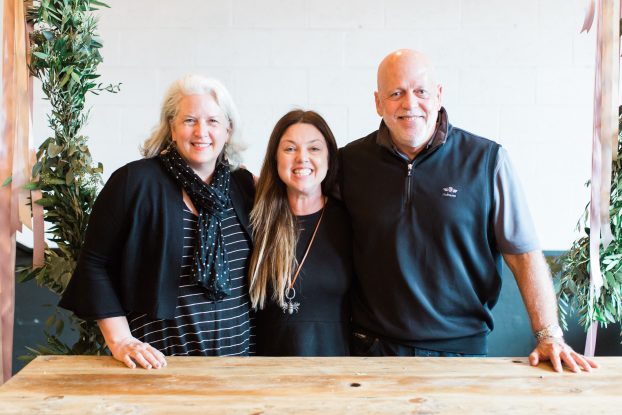
I was so happy to spend time with Christy Hulsey of Colonial House of Flowers (center) and Mayesh Wholesale CEO Patrick Dahlson (far right) (c) Nicole Clarey Photography
As you’ll hear in our conversation, recorded after the all-day, hands-on workshop that she and her team presented, Christy and I met in 2014 at the Chapel Designers New York Conference, where Holly Chapple graciously asked me to speak about Slow Flowers. Later, Christy’s Colonial House of Flowers joined Slowflowers.com, inspired at some level, to honor Christy’s grandmother’s love of gardening and designing with seasonal flowers.
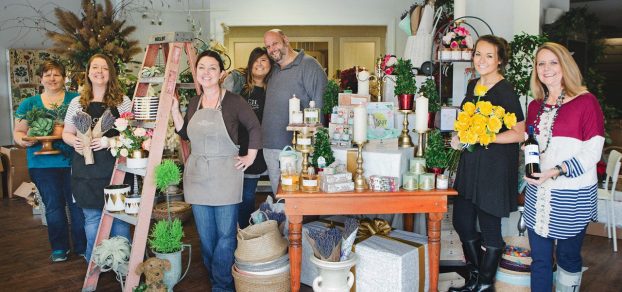
Team Colonial House of Flowers. Christy is in the front, wearing the linen apron; her sister Amanda Currier is immediately to the left of the ladder.
In fact, she mentions her grandmother’s influence often. When Christy joined the Design Star program, Mayesh posted a lovely Q&A with her for their blog. You’ll want to follow the link I share in the show notes to find that, but here are a few favorite excerpts:
In 2012, I assumed ownership of a little nearly 50-year-old landmark flower boutique that was in my family, called the Colonial House of Flowers. I believe the spirit of my grandmother’s creativity and ability to resourcefully create something sophisticated flutters through everything I do. In 2014, Amanda Currier, my sister, joined the Colonial House of Flowers team. Seasonally relevant flowers, branches, and fruit, are the true medium of my art. I’m ever thankful for my grandmother who always sent me into the garden, who brought me a found plant as a gift, and taught me to dig bulbs, grow cuttings, and stop at random roadside stands on family travels. am really excited about the gaining momentum of American Grown Flowers. Slow flowers speak to me. I am excited the movement is finally coming to the Southeastern United States.
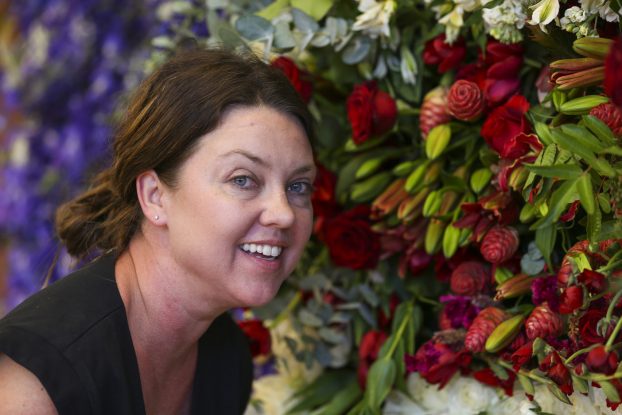
Christy Hulsey, with a detail of the all-American-grown floral flag (c) Certified American Grown photograph
Last December, I interviewed Christy for an Americanflowersweek.com story about the 8-by-12-foot three -dimensional American flag that she and a team created using only domestic flowers. The project was commissioned by Certified American Grown and it was on display at the Wholesale Florist & Floral Supplier Association conference in Miami.
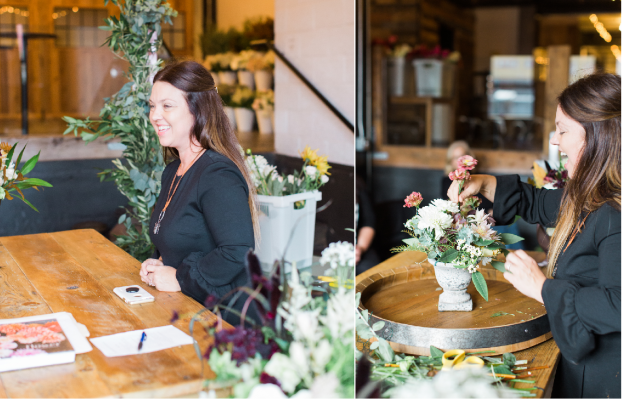
Christy shared her story and taught compot design and hand-tied bouquet design at the Mayesh Design Star Workshop (c) Nicole Clarey Photography
Christy has had a whirlwind year and you’ll love hearing more about the Mayesh Design Star experience, which is coming to a close next month. She has taught workshops all around the country, sharing her design philosophy with professional peers, aspiring designers and floral enthusiasts eager for inspiration. In conjunction, she has also taught a number of succulent design workshops at Pottery Barn stores located in Mayesh cities. And she’s filmed numerous design videos. You can see a few of those here:
As an added bonus, Mayesh CEO Patrick Dahlson sat down with me to record a conversation, which you’ll hear after the Christy interview. This was a rare chance for me to hear more about the Mayesh story and to ask Pat to weigh in on the Slow Flowers movement to promote a greater level of local and seasonal flowers in the conventional wholesale floral channels. I wasn’t disappointed and I’m so glad you can sit in on our give-and-take.
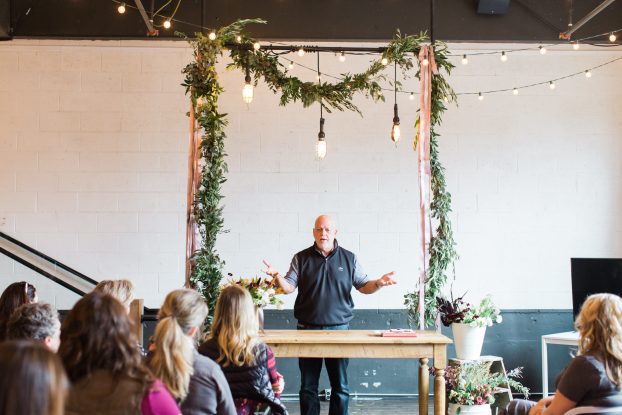
Patrick Dahlson introduced the Mayesh Wholesale story to the workshop audience (c) Nicole Clarey Photography
Here’s a bit more about Pat Dahlson:
As one of nine children, all who are shareholders in Mayesh Wholesale Florist, Patrick has been the CEO of the company since 1985. A natural born leader, Patrick has been a member of Vistage – an international CEO leadership organization – for 21 years. He is past president of Child Share, which helps place foster children in homes; Past President WF&FSA; Board member Southern California Flower Growers Association; and Past President Oakmont Country Club. Passionate about flowers, leadership and mentoring, Pat is also an avid golfer who enjoys yoga and Pilates workouts along with traveling with his three daughters, Alison, Kirstin and Desiree.
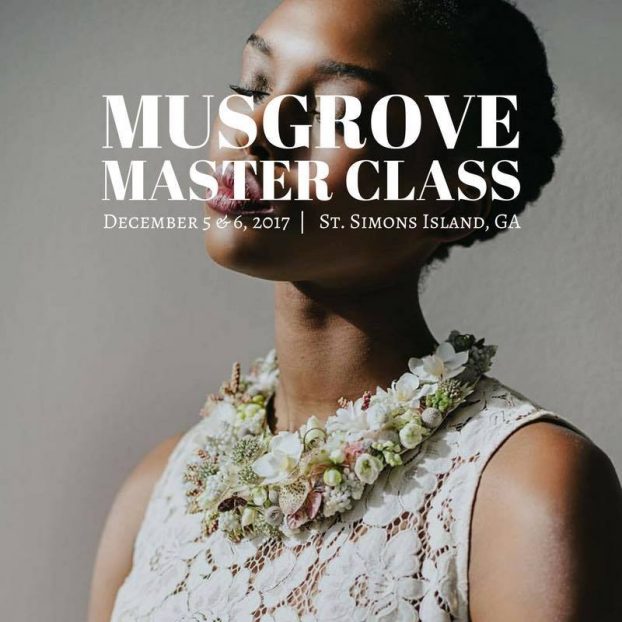 I also want to give you a head’s up about a couple things on the calendar where you can meet Christy Hulsey and Pat Dahlson:
I also want to give you a head’s up about a couple things on the calendar where you can meet Christy Hulsey and Pat Dahlson:
On December 4-6th, Christy will host a Master Class At Musgrove Plantation on St. Simon Island, Georgia, with Susan McLeary of Passionflower.
Susan has been a guest of the Slow Flowers Podcast twice in the past and she is a good friend to the Slow Flowers community.
This two-day design intensive looks fantastic and I encourage you to check out the details, which include intimate design instruction with Christy and Sue, a focus on foam-free, wire-free cascade bouquets PLUS living jewelry such as wrist corsages, shoulder corsages and Sue’s famous “floral tattoo.
You’ll also be part of a styled photo shoot by Lindsey Nowak and a portfolio of your photos by Corbin Gurkin. Click here for more information and to register!
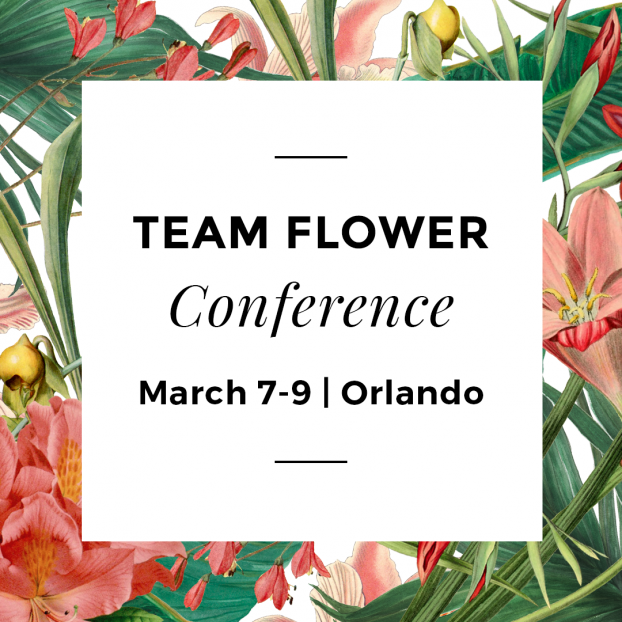 On March 7-9th, 2018, floral business coach Kelly Perry hosts the first Team Flower Conference in Orlando, which features, among other speakers, Pat Dahlson and Christy Hulsey.
On March 7-9th, 2018, floral business coach Kelly Perry hosts the first Team Flower Conference in Orlando, which features, among other speakers, Pat Dahlson and Christy Hulsey.
The conference is designed to help you take your floral business to the next level, and includes a presentation by Kelly pricing, ordering and cultivating creativity.
Christy will share the story of how she transitioned a small-town flower shop in rural Georgia to a nationwide brand, and Pat will cover the latest sourcing news and tips for working with your salesperson on substitutions, and he’ll share his passion for teamwork success in the floral industry. Click here for more information and to register!
Wow, wish I could be part of both of those amazing events!
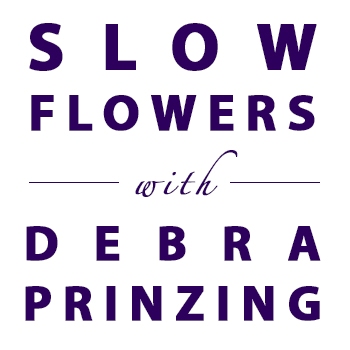 The Slow Flowers Podcast has been downloaded more than 255,000 times by listeners like you. Thank you to each one of you for downloading, listening, commenting and sharing. It means so much.
The Slow Flowers Podcast has been downloaded more than 255,000 times by listeners like you. Thank you to each one of you for downloading, listening, commenting and sharing. It means so much.
If you value the content you receive each week, I invite you to show your thanks and support the Slow Flowers Podcast with a donation — the button can be found on our home page in the right column. Your contributions will help make it possible to transcribe future episodes of the Podcast.
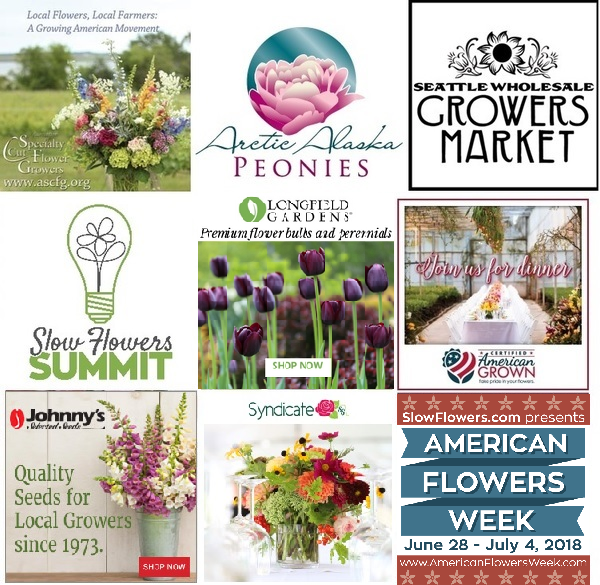 Thank you to family of sponsors:
Thank you to family of sponsors:
Arctic Alaska Peonies, a cooperative of 50 family farms in the heart of Alaska providing high quality, American Grown peony flowers during the months of July and August. Visit them today at arcticalaskapeonies.com
Seattle Wholesale Growers Market, a farmer-owned cooperative committed to providing the very best the Pacific Northwest has to offer in cut flowers, foliage and plants. The Growers Market’s mission is to foster a vibrant marketplace that sustains local flower farms and provides top-quality products and service to the local floral industry. Find them at seattlewholesalegrowersmarket.com
Longfield Gardens provides home gardeners with high quality flower bulbs and perennials. Their online store offers plants for every region and every season, from tulips and daffodils to dahlias, caladiums and amaryllis. Visit them at longfield-gardens.com.
Syndicate Sales, an American manufacturer of vases and accessories for the professional florist. Look for the American Flag Icon to find Syndicate’s USA-made products and join the Syndicate Stars loyalty program at syndicatesales.com.
Johnny’s Selected Seeds, an employee-owned company that provides our industry the best flower, herb and vegetable seeds — supplied to farms large and small and even backyard cutting gardens like mine. Check them out at johnnysseeds.com.
Association of Specialty Cut Flower Growers. Formed in 1988, ASCFG was created to educate, unite, and support commercial cut flower growers. It mission is to help growers produce high-quality floral material, and to foster and promote the local availability of that product. Learn more at ascfg.org.
I’m Debra Prinzing, host and producer of the Slow Flowers Podcast. Next week, you’re invited to join me in putting more American grown flowers on the table, one vase at a time. And If you like what you hear, please consider logging onto Itunes and posting a listener review.
The content and opinions expressed here are either mine alone or those of my guests alone, independent of any podcast sponsor or other person, company or organization.
The Slow Flowers Podcast is engineered and edited by Andrew Brenlan. Learn more about his work at KineticTreeFitness.com.
Music Credits:
https://creativecommons.org/li
Perfect (Instrumental Version); Once Tomorrow (Instrumental Version)









